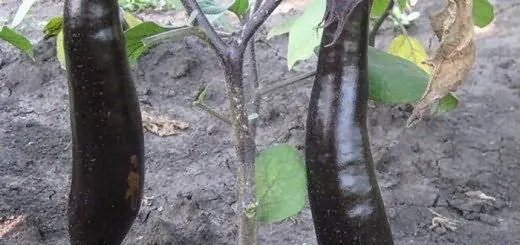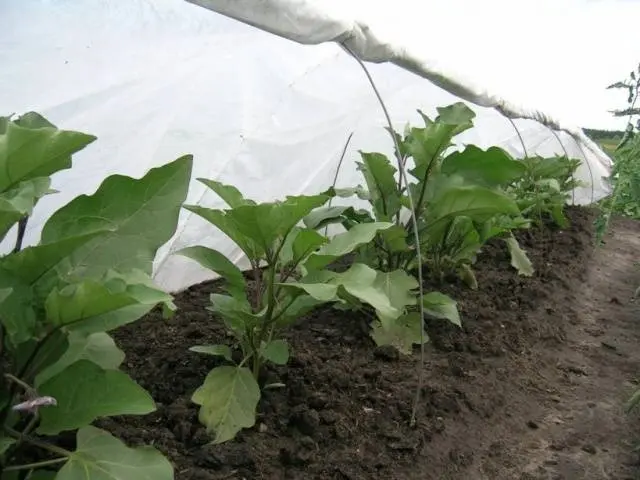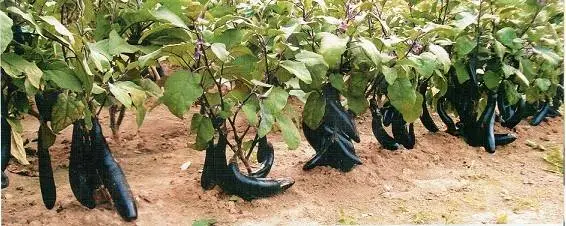In the name King of the North F1, the Latin letter F and the number 1 mean that this is a hybrid of the first generation. Perhaps the only disadvantage of this variety is the inability to get seeds from it. The second generation of eggplant will no longer produce fruits with the desired qualities.
One of the most popular eggplant varieties in the Asian part of the Federation. Siberian gardeners collect up to fifteen kilograms of fruits per square meter and up to ten eggplants from each bush. The King of the North F1 was bred specifically for the northern regions, but it was also highly appreciated by vegetable growers of the Middle Strip.
The King of the North F1 deserved rave reviews not only from summer residents of the northern regions, but also from industrial farms. Its keeping quality, fruit uniformity and high yield make it suitable for industrial cultivation.
Description
In general, the variety is very unpretentious. The King of the North is a frost-resistant eggplant variety that can tolerate light frosts. He does not like heat, and therefore it is difficult to grow it in the southern regions of Our Country.

The bushes are low, only forty centimeters. Bushes are planted at a distance of forty centimeters from each other with a row spacing of sixty centimeters. Thus, on each unit of area, about five bushes are obtained.
The variety is early maturing. You can get a harvest already in the fourth month after sowing the seeds. The fruits are long with purple skin. The diameter in cross section is small. With a low growth of the bush, the length of eggplants, growing up to thirty, and sometimes forty centimeters, creates certain difficulties.
Eggplants in contact with the ground can rot. This issue is solved by mulching the soil under the eggplant bushes.
The weight of the fruit is about three hundred grams. Fruit pulp with excellent taste, white. There are no spikes on the calyx, which makes harvesting easier. The hybrid bears fruit throughout the summer period.
Agrotechnics
Like other eggplants, King of the North F1 is grown in seedlings. Seedlings are often planted immediately in open ground. Today, Siberians have adapted to grow not only this variety, but also other rather heat-loving vegetables in the open field.

For this, a bed with fresh manure is equipped. The bed is covered with polyethylene to retain heat and accelerate the overheating of manure. Similarly, instead of manure, you can use green mass, which will turn into compost.
If the temperature inside the bed is too high, the eggplant roots will burn. It is necessary to wait until the temperature inside the bed drops. After that, holes with a volume of about eleven liters are made in the garden, filled with compost and garden soil, and a young eggplant is planted in the hole.
At low temperatures (below minus nine), the seedlings are covered with plexiglass. Roots warmed by the warmth of manure can work at full capacity. Eggplant develops a powerful root system in such a bed. As a result, the bush can tie and form large fruits in larger quantities.
The second option for a warm bed is its construction from improvised materials such as straw, reeds, sedges, sphagnum moss, sawdust. The advantage of beds made of such material is that the substrate serves only one season. Then it is dug up with the ground or processed into compost. Due to the single use, there are no pathogenic bacteria in the substrate and the plants do not get sick.
Such a substrate is heated like dung ridges, due to which the plants develop faster and bear fruit more amicably.
The landing site for the King of the North F1 is chosen in the sun and protected from the wind. Eggplant can be planted between shrubs, you can block the bushes from the strongest and coldest winds (you need to know the wind rose in the area) with plexiglass.
Planting legumes is considered a good shelter from the wind. This method is more suitable for industrial cultivation, as it involves long ridges. There is another benefit to eggplant co-planting with legumes: during the formation of fruits, eggplant needs a lot of nitrogen, while legumes produce nitrogen in the roots.

Growing eggplant outdoors in warm beds protects the bushes from fungal diseases common in the warm, humid microclimate of greenhouses.
Since the activity of fungi that develop at the air-soil interface is reduced by the mulch that covers the soil, fungi cannot harm eggplants. Such beds eliminate the tedious weeding, saving the gardener’s time. But you have to work hard at their device.
Reviews of gardeners who have tried to grow eggplant of the King of the North F1 variety on such beds unanimously boil down to “I won’t grow it in a greenhouse anymore”. According to the testimonies of people who have tried both methods, the eggplant drives the green mass in the greenhouse, not intending to set fruit. While in the beds in the open air, the harvest often turns out to be even higher than the hybrid promised by the manufacturer.









